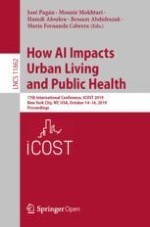1 Introduction
2 System Model
2.1 Consumer System Design
Consumption (KW/h) | Fixed consumption (KW/h) | Duration (hours) | Time ON | Time OFF |

Open Access 2019 | OriginalPaper | Buchkapitel
verfasst von : Esther Palomar, Carlos Cruz, Ignacio Bravo, Alfredo Gardel
Erschienen in: How AI Impacts Urban Living and Public Health
Aktivieren Sie unsere intelligente Suche, um passende Fachinhalte oder Patente zu finden.
Wählen Sie Textabschnitte aus um mit Künstlicher Intelligenz passenden Patente zu finden. powered by
Markieren Sie Textabschnitte, um KI-gestützt weitere passende Inhalte zu finden. powered by
Consumption (KW/h) | Fixed consumption (KW/h) | Duration (hours) | Time ON | Time OFF |